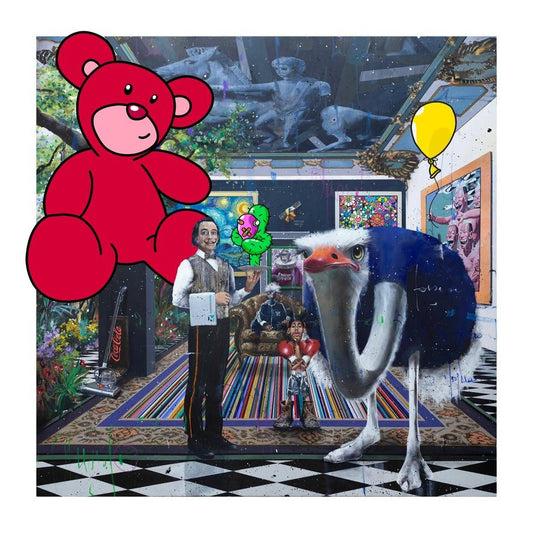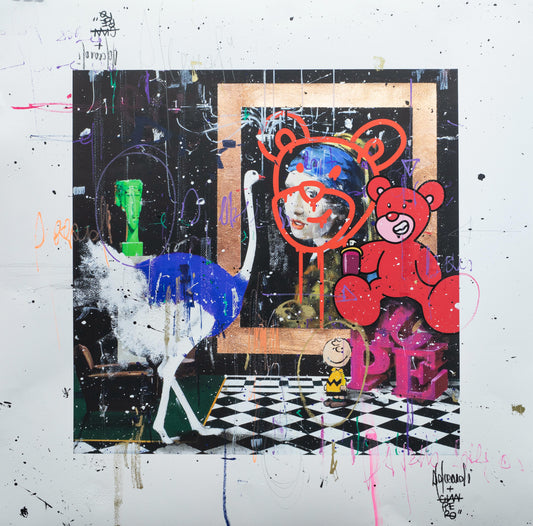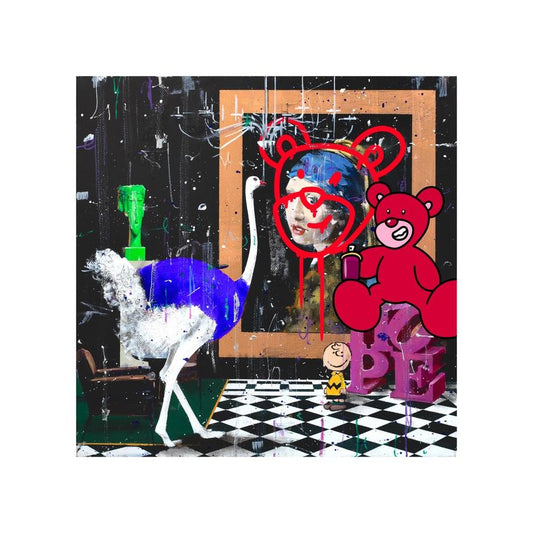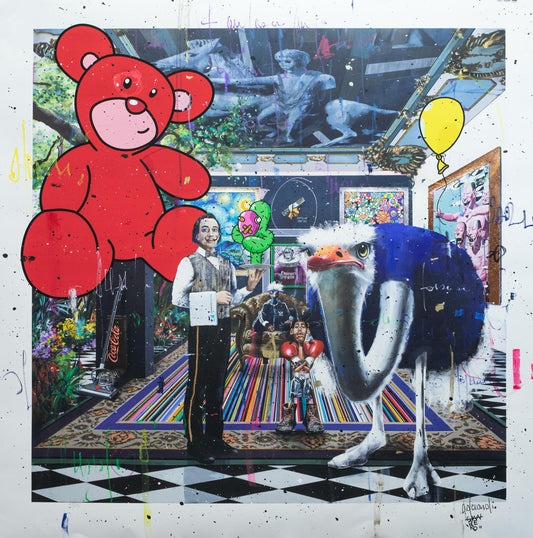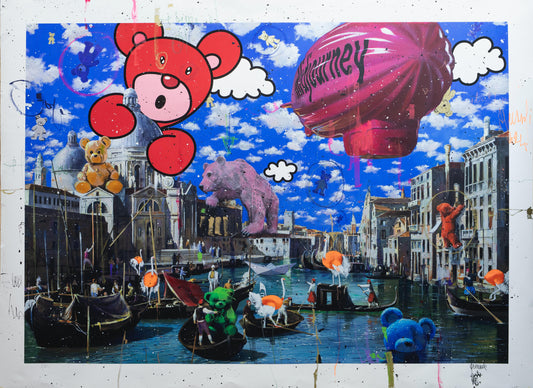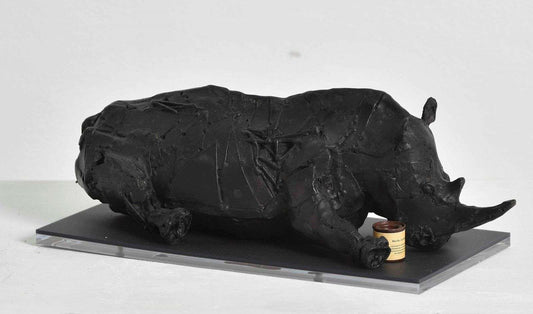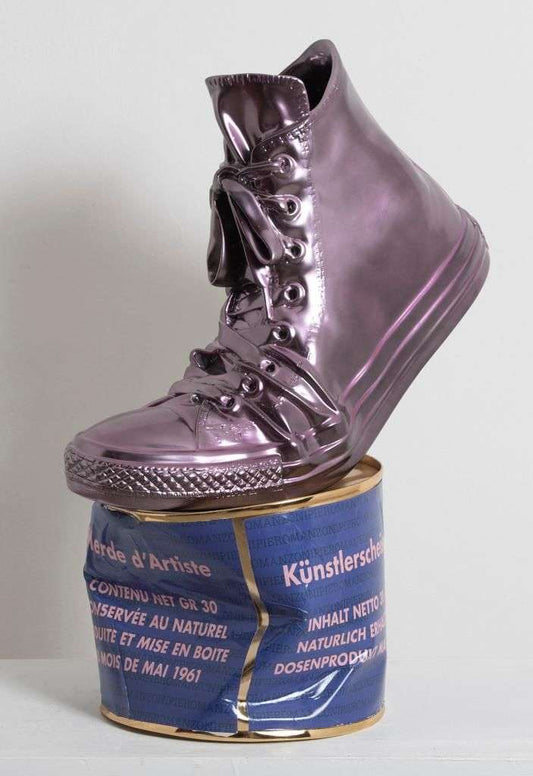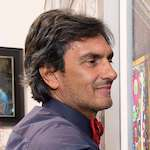
Angelo Accardi
Angelo Accardi (Sapri, 1964) is a cultured and introspective artist who plays with the history of art and with the environments, urban and interior landscapes, in which human life takes place. His paintings are powerful subversions, or mix and match, spatio-temporal, capable of striking the viewer's emotions, making him reflect. Even just in an attempt to find the key to the problem. In his paintings, in fact, it happens that a splendid Italian square, deserted only like those of De Chirico, is invaded by a plane fallen from the sky or a ship torn from the sea. Scenes that could easily come from a very American disaster film.
Or it happens that the elegant living rooms of any bourgeois apartment, dotted with works by great artists such as Keith Haring, Klimt, Magritte and Leonardo da Vinci, are inhabited not by well-to-do ladies, in sets of pearls, which one would expect to find but by colorful ostriches. Ostriches become the metaphor of man's fears and loneliness
In some works, animals and humans share the same sumptuous halls even if, and what becomes even more distressing, the humans are either sleeping or seem to be hallucinations. Mirages produced by a confused mind.
This logical, spatial and temporal distortion immediately captures the viewer and leaves him with a sense of healthy restlessness.
It captures him because, by recovering the profound value of art, it forces him to reflect to grasp the meaning of the work. Angelo Accardi's paintings cannot be looked at en passant, or just for a selfie. They require time and attention, obviously well rewarded.
It disturbs him because, in fact, the canvases of this ever-growing artist portray our fears. Ostriches, but also rhinos, pigs, Simpsons characters or planes and ships catapulted into our places, represent what threatens the human race. Accardi, like a very good psychotherapist, goes to ferret out the fears of contemporary man and materializes them in his paintings. He puts them before our eyes, forcing us, ex abrupto, to face them.
With prices that double, and this is not hyperbole, from year to year, presence in the most important galleries around the world and at the most prestigious fairs (for example the 54th Venice Biennale), Angelo Accardi has succeeded in his aim of recovering the true function of art: to make its audience reflect and emotionally engage.
It is no coincidence that his teachers were Giacometti and Francis Bacon, artists who influenced his first, purely figurative, experiences.
The mature style comes later. After having started, and abandoned, the Academy of Fine Arts in Naples with a consequent crisis that led him to throw himself into abstractionism, in the 90s he arrived at the social study of man. From here, like one of his planes, he took off.
Technically, his works arise from reasoned, long and complex work. The first phase, a sketch, is a photographic process. A shot, indeed, is modified with Photoshop and populated with animals, in fact, or ships and planes. Then, Angelo Accardi paints directly on the canvas, faithfully replicating the sketch as hyperrealist painters do. The third phase, the freest and most spontaneous, is the moment in which the artist improvises, modifying the canvas guided by free inspiration, until he is satisfied. Often, between one intervention and another, he lets days pass, moves away and re-enters the work, with the right critical spirit for the finishing touches. The final step before delivering his works to the world and the psyche of the spectators. The superposition of colors of different nature, from oils to inks, a bit like in the Flemish masters, creates the depth of the characters who seem to emerge, almost as if they were in relief, from the background.
It goes without saying that Angelo Accardi is an artist worth buying today. Tomorrow the prices could already be much higher and, above all, it is not certain that the work will still be available. Since they sell like hot cakes, with the same speed with which a crazed jet swoops into the (fortunately imaginary) heart of an elegant Italian square.
The artist's works
-
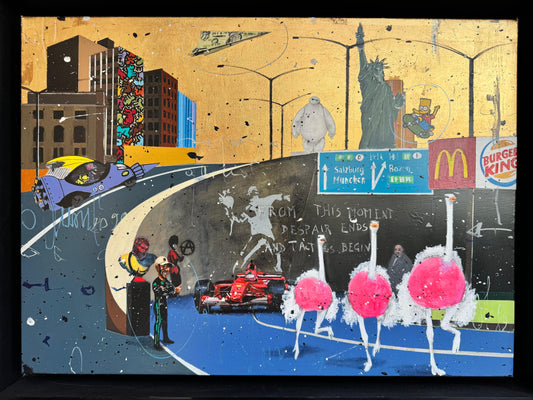 Sold outSold out
Sold outSold out -
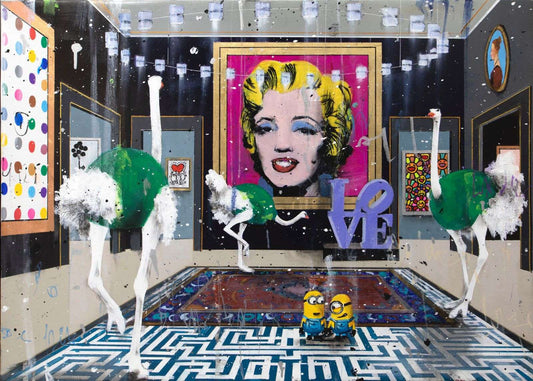 Sold outSold out
Sold outSold out -
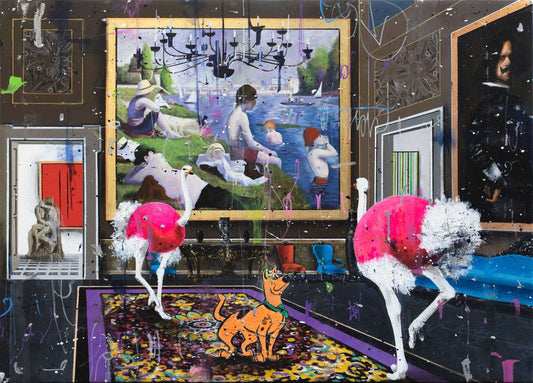 Sold outSold out
Sold outSold out -
 Sold outSold out
Sold outSold out -
-
-
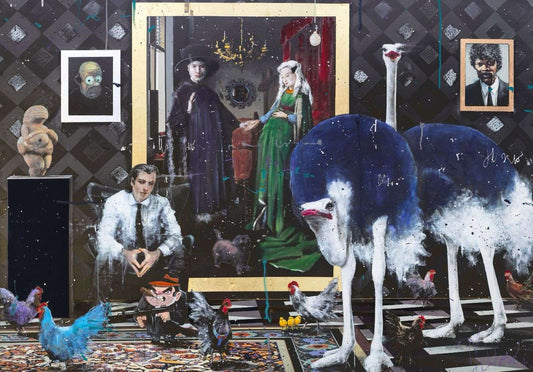 Sold outSold out
Sold outSold out
